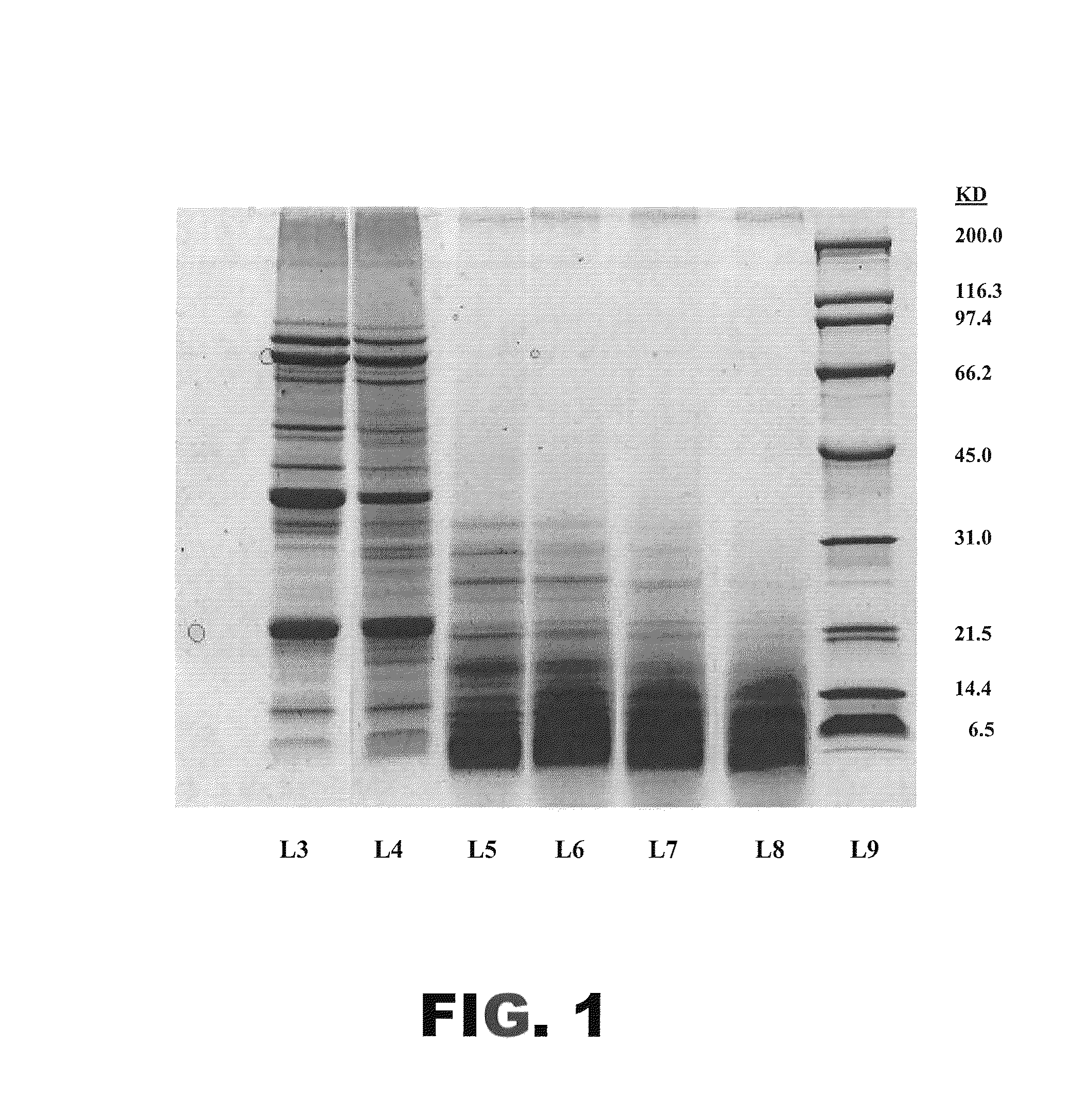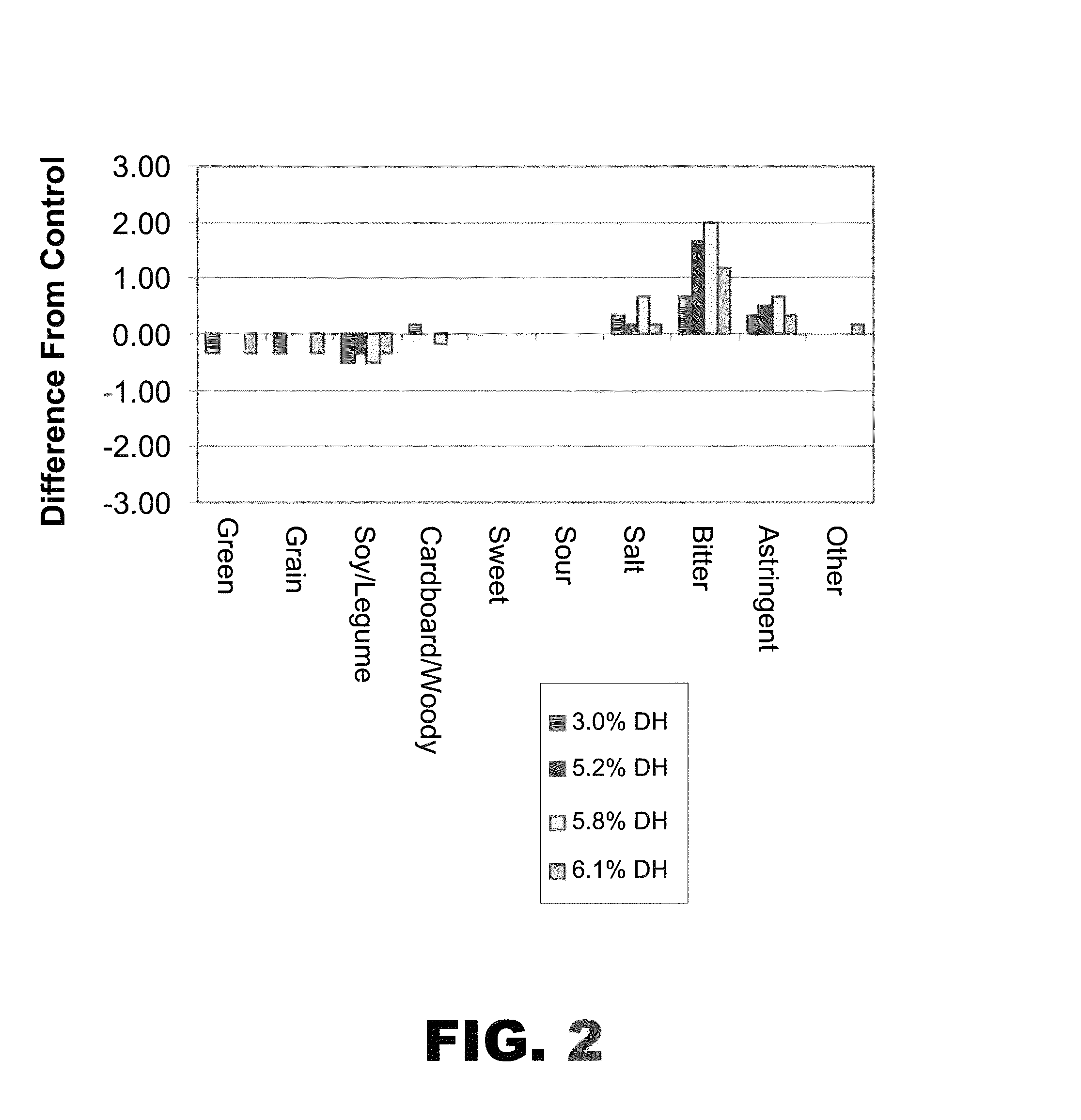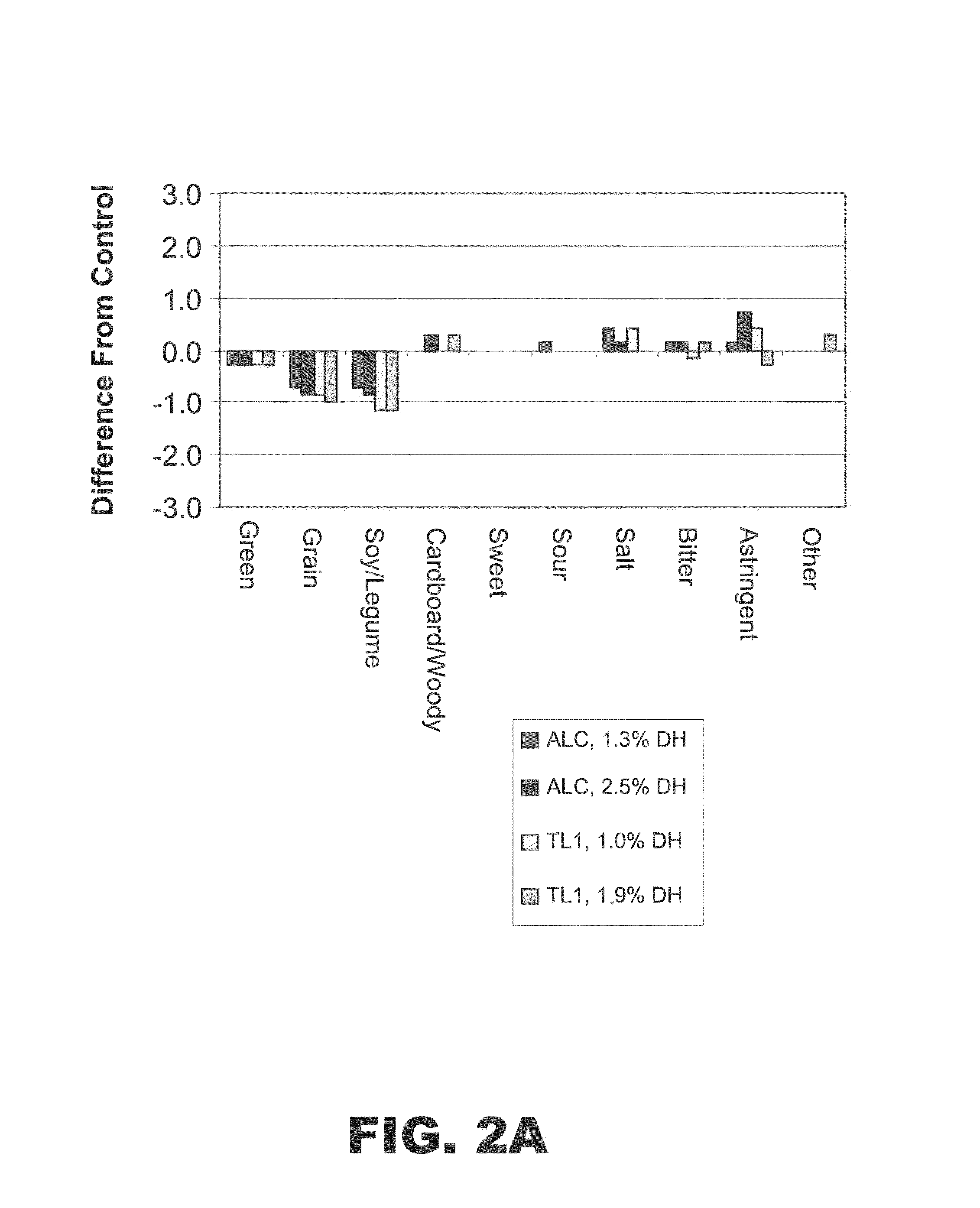Protein hydrolysate compositions having improved sensory characteristics and physical properties
a technology of protein hydrolysate and composition, applied in the field of protein hydrolysate composition, can solve the problems of fast-paced, harried life style of many individuals, objectionable or unpalatable,
- Summary
- Abstract
- Description
- Claims
- Application Information
AI Technical Summary
Benefits of technology
Problems solved by technology
Method used
Image
Examples
example 1
Hydrolysis of Isolated Soy Proteins with the Trypsin Like Endopeptidase, TL1
[0091]Isolated soy protein was hydrolyzed into smaller peptide fragments in an attempt to increase its solubility and improve its sensory characteristics. The fungal trypsin-like peptidase from Fusarium oxysporum, TL1, the sequence of which is shown as SEQ ID NO:1 of the present application, was chosen because it cleaves peptide bonds at the C-terminal side of arginine or lysine residues, whereas other peptidases have been shown to cleave random peptide bonds in soy proteins.
[0092]An 8% slurry of isolated soy protein (ISP) was made by dispersing 320 g of SUPRO® 500E, Solae, St. Louis, Mo.) in 3680 g of water using moderate mixing to reduce foaming. Two drops of a defoamer were added, if necessary. The solution was heated to 80° C. for 5 min to inactivate any serine protease inhibitors that may have been present. The mixture was cooled to 50° C. and the pH was adjusted to 8.0 with food-grade KOH (a 50% w / w so...
example 2
SDS-PAGE Analysis of TL1 Hydrolysates
[0096]TL1 hydrolysates with 0.3% DH, 2.2% DH, 3.1% DH, 4.0% DH, and 5.0% DH were prepared essentially as described in Example 1. Aliquots of each, and non-hydrolyzed isolated soy protein, were resolved by SDS-PAGE using standard procedures. This analysis permitted comparison of molecular sizes of the polypeptides in the soy hydrolysates with those of the starting soy proteins. FIG. 1 presents an image of a Coomassie stained gel. The non-hydrolyzed isolated soy protein comprises polypeptides ranging in size from about 5 kDa to about 100 kDa. Although the size range of the polypeptides in the 0.3% DH hydrolysate was similar to that of the starting material, this hydrolysate contained additional small polypeptide fragments. The hydrolysates with higher % DH essentially lacked polypeptides larger than about 20-30 kDa, and all had additional small (<5 kDa) polypeptides. The polypeptide patterns of the 2.2% DH, 3.1% DH, and 4.0% DH hydrolysates were qu...
example 3
Analysis of Peptide Fragments in TL1 Hydrolysates by LC-MS
[0097]Peptide fragments in the TL1 hydrolysates prepared in Example 1 were identified by liquid chromatography mass spectrometry (LC-MS). Samples were prepared for LC-MS analysis by mixing an aliquot containing 2 mg of each TL1 hydrolysate with 0.1% formic acid (1 mL) in a glass vial and vortexing for 1-2 min. The mixture was centrifuged at 13,000 rpm for 5 min. An aliquot (25 μL) of the supernatant was injected into C18 analytical HPLC column (15 cm×2.1 mm id, 5 μm; Discovery Bio Wide Pore, Supelco®), Sigma-Aldrich, St. Louis, Mo.) on a HP®-1100 (Hewlett Packard; Palo Alto, Calif.) HPLC instrument. The elution profile is presented in Table 2; Solvent A was 0.1% formic acid; Solvent B was 0.1% formic acid in acetonitrile, the flow rate was 0.19 mL / min, and the column thermostat temperature was 25° C.
[0098]
TABLE 2HPLC Solvent Elution ProfileTimeSolvent ASolvent B(min)(%)(%)09553555453755453910904210904495545955
[0099]An aliquot...
PUM
| Property | Measurement | Unit |
|---|---|---|
| pH | aaaaa | aaaaa |
| pH | aaaaa | aaaaa |
| temperature | aaaaa | aaaaa |
Abstract
Description
Claims
Application Information
 Login to View More
Login to View More - R&D
- Intellectual Property
- Life Sciences
- Materials
- Tech Scout
- Unparalleled Data Quality
- Higher Quality Content
- 60% Fewer Hallucinations
Browse by: Latest US Patents, China's latest patents, Technical Efficacy Thesaurus, Application Domain, Technology Topic, Popular Technical Reports.
© 2025 PatSnap. All rights reserved.Legal|Privacy policy|Modern Slavery Act Transparency Statement|Sitemap|About US| Contact US: help@patsnap.com



